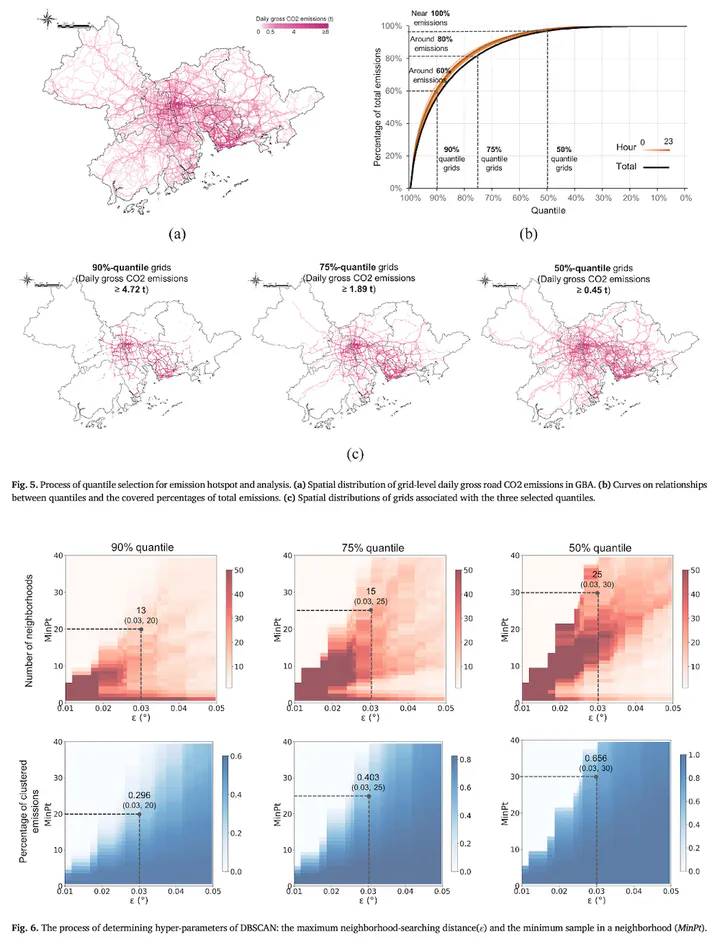Exploring spatiotemporal pattern and agglomeration of road CO2 emissions in Guangdong, China

Abstract
Road transport is a prominent source of carbon emissions. However, fine-grained regional estimations on road carbon dioxide (CO2) emissions are still lacking. This study estimates road CO2 emissions in Guangdong Province, China, at high spatiotemporal resolution, with a bottom-up framework leveraging massive vehicle trajectory data. We unveil the spatiotemporal pattern of regional road CO2 emissions and highlight the contrasts among cities. The Greater Bay Area (GBA) is found to produce 76 % of the total emissions, wherein Guangzhou emits the most while Shenzhen has the highest emission intensity. Emission agglomeration is still an under-explored field, which we advance in this paper. We propose Quantile-based Hierarchical DBSCAN (QH-DBSCAN) to explore road CO2 emission agglomeration in GBA. Our method is the first one to identify the specific location and scope of emission hotspots. Emission hotspots exhibit significant concentration on major urban centers. Considering emission characteristics from multiple perspectives, we derive six emission categories, including four emission zones and two emission connectors. The density-based property of our method results in spatially contiguous regions with similar emission patterns. Accordingly, we divide policy zones and propose targeted strategies for road carbon reduction. The study provides new technologies and insights to achieve regional sustainable development.